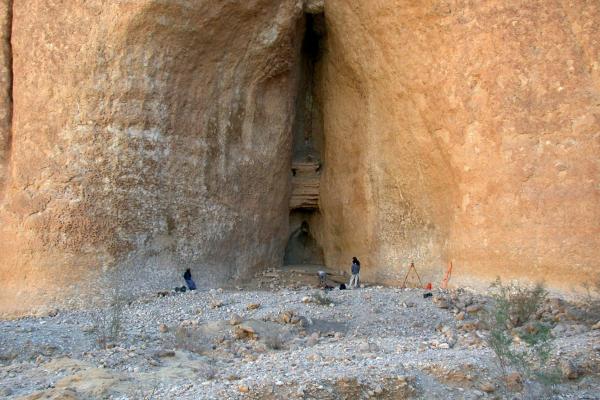In ancient Arabia, some tools were created to show off skills

Fluted projectile points were used like a “peacock’s feathers”
People living in southern Arabia some 8,000 years ago created intricate stone weapons that were not just useful, but designed to “show off” their tool-making skills, a new study suggests.
Researchers from the French National Centre for Scientific Research (CNRS), The Ohio State University and the Max Planck Institute for the Science of Human History excavated and examined projectile points – such as spearheads and arrowheads – created during the Neolithic period in what is now Yemen and Oman.
They found that the Arabians independently invented a process to create projectile points – called fluting – that was first used by people living in North America thousands of years earlier.

Joy McCorriston
But there was one key difference between fluting as it was used in North America and the way it was used in Arabia, said Joy McCorriston, co-author of the study and professor of anthropology at Ohio State.
In North America, fluting was used just to make the arrowhead or spearhead more functional. But in Arabia, people also used it to demonstrate their technical skills.
“It was like a peacock’s feathers – it was all for appearance. They used fluting to show just how skilled they were at using this very difficult technology, with its heightened risk of failure,” McCorriston said.
The study was published today (Aug. 5, 2020) in the journal PLOS ONE.
The scientists studied projectile points from two archaeological sites: Manayzah, in Yemen, and Ad-Dahariz, in Oman. McCorriston and a team from Ohio State oversaw the excavation in Manayzah, which lasted from 2004 to 2008.
Finding fluted points outside of North America was an important discovery, said Rémy Crassard of CNRS, lead author of the study.
“These fluted points were, until recently, unknown elsewhere on the planet. This was until the early 2000s, when the first isolated examples of these objects were recognized in Yemen, and more recently in Oman,” Crassard said.
Fluting involves a highly skilled process of chipping off flakes from a stone to create a distinctive channel. It is difficult and takes much practice to perfect, McCorriston said.
In North America, almost all fluting on projectile points was done near the base, so that the implement could be attached with string to the arrow or spear shaft. In other words, it had a practical application, she said.

Fluted points from Manayzah. Photo: Rémy Crassard
But in this study, the researchers found some Arabian points with fluting that appeared to have no useful purpose, such as near the tip.
As part of the study, the researchers had a master technician in flintknapping – the shaping of stones – attempt to create projectile points in a way similar to how researchers believe the ancient Arabians did.
“He made hundreds of attempts to learn how to do this. It is difficult and a flintknapper breaks a lot of these points trying to learn how to do it right,” McCorriston said.
The question, then, is why would these Neolithic people do this when it was so costly and time-consuming and didn’t make the points more useful? In addition, they only used fluting on some points.
“Of course, we can’t say for sure, but we think this was a way for skilled toolmakers to signal something to others, perhaps that one is a good hunter, a quick study, or dexterous with one’s hands,” she said.
“It showed one was good at what one did. This could improve one’s social standing in the community.”
